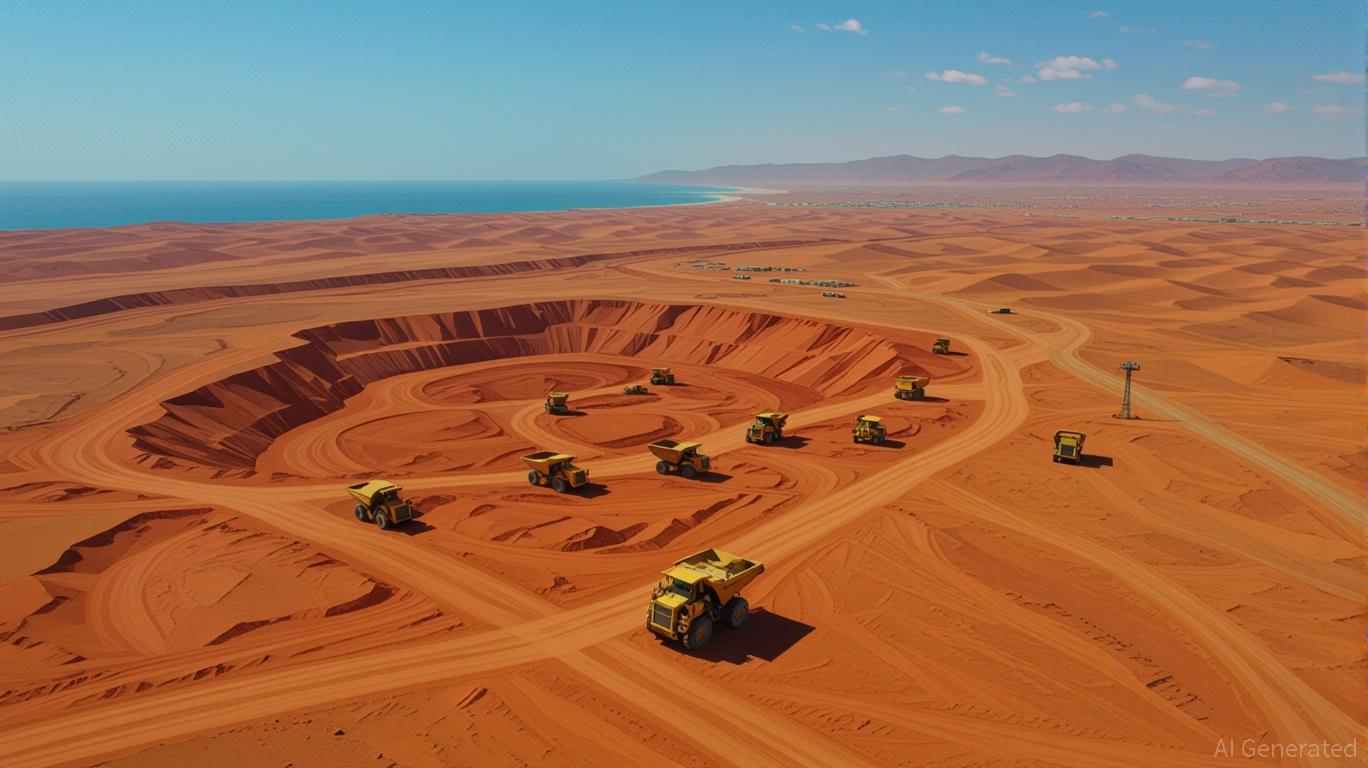
The geopolitical tectonics of North Africa are shifting, and investors who recognize the seismic changes in U.S.-Morocco relations may find themselves at the forefront of a transformative era. The 2020 U.S. recognition of Moroccan sovereignty over Western Sahara—a move that has since gained momentum under the second Trump administration—has not merely redrawn diplomatic maps; it has recalibrated the region’s economic trajectory. For the first time in decades, Western Sahara is emerging as a focal point for resource-driven investment, with phosphate, fisheries, and energy sectors poised to attract capital flows that could rival the region’s traditional hubs.
Geopolitical Stability as a Catalyst
The U.S. endorsement of Morocco’s autonomy plan over Western Sahara has created a de facto stability that investors have long sought in the region. By aligning with Morocco’s territorial claims, the U.S. has effectively insulated the kingdom from the volatility that once characterized its relationships with Algeria and other regional actors. This stability is not symbolic; it is operational. The appointment of Duke Buchan III as U.S. ambassador to Morocco and the establishment of a Virtual Presence Post in Dakhla signal a sustained diplomatic commitment. Meanwhile, the U.S. has leveraged its influence to encourage 29 countries—primarily in Africa and the Arab world—to open consulates in Western Sahara, creating a web of diplomatic validation that has normalized Moroccan control in the eyes of global capital.
This normalization has direct economic implications. The U.S.-Morocco Free Trade Agreement (FTA), which has already spurred $6.3 billion in bilateral trade annually, could now extend to Western Sahara, potentially unlocking preferential access to U.S. markets for goods produced in the territory. For companies operating in phosphate, fisheries, or renewables, this represents a strategic arbitrage: lower production costs in Western Sahara combined with higher-value access to the U.S. market.
Resource Access: From Controversy to Opportunity
Western Sahara’s natural endowments are no secret. The Bou Craa phosphate mine, operated by Morocco’s state-owned OCP, is one of the largest in the world, supplying 30% of global phosphate exports. With U.S. recognition, OCP’s operations have gained a veneer of legitimacy that could attract foreign partnerships. Phosphate is a critical input for agriculture, and as global food security concerns intensify, the sector is set to grow. Investors should watch OCP’s expansion plans and its potential to partner with global agribusiness giants.
Beyond phosphate, the region’s fisheries are another goldmine. The EU-Morocco Fisheries Partnership Agreement, which includes Western Sahara, allows European fleets to fish in the region’s waters in exchange for payments to Morocco. The EU’s 2023 report noted that 85% of Western Sahara’s pelagic fish stocks are fully or overexploited, yet the sector remains a cash cow for Morocco. For investors, this means opportunities in aquaculture, processing, and export logistics—though ethical concerns about overfishing and Sahrawi displacement must be navigated carefully.
The energy sector, too, is awakening. Morocco’s Noor Solar Complex, already one of the world’s largest solar projects, is expanding into Western Sahara, leveraging the region’s abundant sunlight. Meanwhile, seismic surveys for oil and gas—backed by U.S. companies—suggest untapped hydrocarbon potential. While environmental risks loom, the strategic location of Western Sahara near key shipping routes makes it a compelling asset for energy infrastructure.
Investment Risks and Rewards
The ethical and legal challenges surrounding Western Sahara’s resources cannot be ignored. The EU Court of Justice and the International Court of Justice have both ruled that Morocco’s sovereignty over the territory is unproven, and the Sahrawi people’s right to self-determination remains unfulfilled. For investors, this creates a dual-edged sword: while U.S. recognition has reduced political risk in the short term, long-term exposure to regulatory or reputational backlash is possible.
However, the current geopolitical climate suggests that such risks are manageable. The U.S. and its allies have shown little appetite to challenge Morocco’s de facto control, and the Sahrawi-led Polisario Front lacks the international backing to reverse the status quo. For investors, this means a window of opportunity to secure assets in a region where the cost of entry is low and the upside is high.
Where to Put Your Money
1. Phosphate and Agriculture: OCP (Morocco’s state-owned phosphate giant) is the linchpin. Investors can gain exposure through Moroccan equities or via global agribusiness companies that rely on phosphate inputs.
2. Renewables: The Noor Solar Complex in Western Sahara is a flagship project. Look for partnerships between Moroccan state entities and international energy firms.
3. Logistics and Infrastructure: As Western Sahara integrates into the global economy, demand for ports, roads, and energy grids will surge. Infrastructure plays could include engineering firms with ties to Morocco.
Conclusion: A High-Stakes Gamble with High Rewards
The U.S. recognition of Moroccan sovereignty over Western Sahara is more than a diplomatic maneuver—it is a green light for capital to flow into one of the world’s most resource-rich but politically sensitive regions. For investors with the stomach for geopolitical risk, the rewards are substantial. But success will require a delicate balancing act: leveraging the stability provided by U.S. backing while hedging against the unresolved legal and ethical questions that linger in the background.
As the world grapples with resource scarcity and the need for strategic supply chains, Western Sahara’s potential is no longer a footnote in the Sahrawi conflict—it is a frontier market in the making. The question for investors is not whether to act, but how to act wisely.
